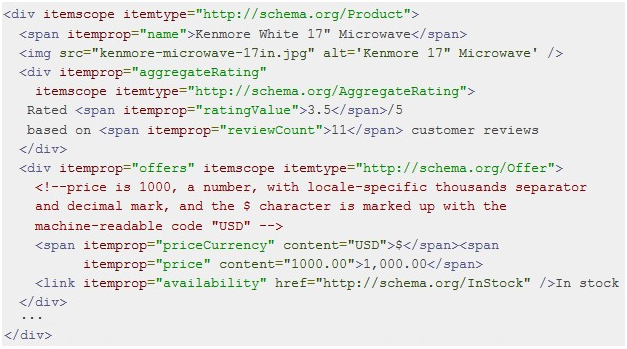If you are having an eCommerce website with product pages, then it is a best practice to use structured data for marking up product information that will lead to better SERPs with rich snippets. Such information comprises name, rating, price and availability of a product.
Another advantage is that by using structured data, web pages achieve a higher click- through rate as compared to results achieved otherwise. That is because search results are matched directly with search queries.
This is a phenomenon that is quickly catching up in the industry because it has now become a necessity and eCommerce businesses have now realized the significance of rich snippets in augmenting the SERPs and are now vying with each other in order to beat the competition.
Why use Structured Data for eCommerce?
For Higher Page Ranking
As per Google there is no affect on the rank of a web page whether webmasters use structured data or unstructured data. But there is certainly a positive impact in page rankings that is derived from the use of rich snippets. In other words, structured data affects a page’s ranking in an indirect way because by using rich snippets, web pages achieve a higher click-through rate and a lower bounce rate. In this way their rankings improve.
For Higher Click-Through Rate
Rich snippets help eCommerce web pages in achieving a higher click-through rate by using structured data. Earlier on, when structured data was being used by only a few eCommerce businesses, search results were marked-up only in a few instances. However, as most eCommerce businesses have now started using structured data, search results are mostly found to be marked-up and this has become quite a necessity now in contemporary times.
For increasing User Engagement
eCommerce businesses that use structured data lead to a higher user engagement because they are able to provide useful information to visitors, especially information related to the price and rating of a product. Visitors prefer to stay on the page and this increases their engagement and leads to a lower bounce rate. This also improves page rank and keyword rank.
How to use Structured Data?
The strategy of how structured data can be implemented in a web page is very simple. At the beginning one needs to compile basic information related to a product, namely:
- What type of a product is it?
- Where does it need to be shipped?
- What currency can be accepted for it?
By answering these questions, one is able to make a choice from the different types of structured data that are available. The four main snippets that are typically used in any marked-up product page comprise the following and are the ones that appear in search engine results:
- Name
- Aggregate Rating
- Price
- Availability
Implementing the Schemas on a Product Page
- The first step is to embed the content about the product (name, price, reviews, etc.) between itemscope itemtype=”http://schema.org/Product”> and tags.
- The next step is to locate the product name within that<div> section and put it in <span itemprop=”name”> </span> tags.
- Assuming that the eCommerce site has a five-star product rating system and visitors have already given their ratings on a product, add another section to the code (inside the itemscope itemtype=”http://schema.org/Product”>section) so that it contains the rating This should be marked-up using itemtype=”http://schema.org/AggregateRating”>tags. Within this Aggregate Rating section, tag the average rating with tags and the number of ratings contributing to that average with tags.
- The next step is to create another <div>section that will contain the “offer” mark-up, which includes the price and availability. This should also be inside the itemscopeitemtype=”http://schema.org/Product”> section and formatted with tags. The price should be formatted within this Offer section using tags. Assuming the product is in stock, also include the tag in the Offer section.
Below is an example from Schema.org:

Once the schema code has been added to a product page, it is a good idea to test it in Google’s Structured Data Testing Tool to ensure that there are no errors and the view in search engine results pages looks good. Later, more product information can be marked up with structured data to improve results based on search engine queries.
